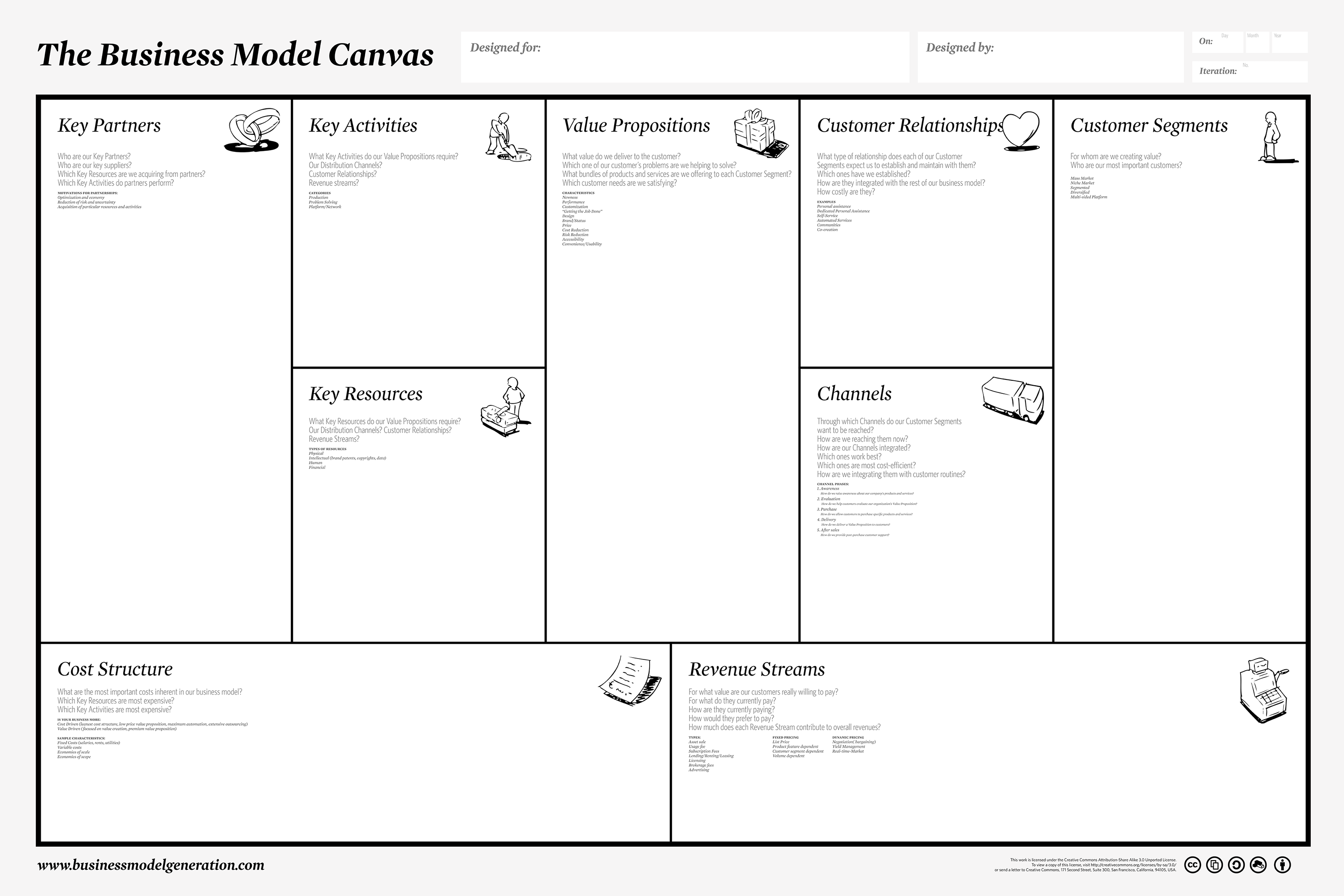Business Model Generation
This is an archive of blog post I wrote during my first venture (beginning of 8thcolor).
In our quest building-our-company, I've just finished a book: Business Model Generation notably written by Alexander Osterwalder. This book presents a new tool allowing to develop and sketch out new or existing business models: Business Model Canvas. This tool consists in a visual template composed of nine building blocks composing the business model.

I don't go deeper in its description, let me instead tell you how the book is structured, and how is worthy I think it is or not.
The book came from the Alexander Osterwalder's PhD thesis under Yves Pigneur's supervision. The methodology he's designed has started to be applied around the world and notably by some big companies such as 3M or Deloitte. The idea of a book naturally came. But they didn't want to make yet another business book. They built an online community around a core team in order to fund the project and obtain feedbacks and contributions. As results, the final book is coauthored by 470 practitioners. That means lots of real-world perspectives and examples. Another good point is the visual presentation of the book, in the spirit of "a sketch is often more valuable than a thousand of words". It makes the reading very comfortable: even if you're get lost by the presented concepts, you can grab on them thanks to the drawings.
About its structure, the book is composed of five main sections guiding you from the tool basics to how you can generate business model:
- Canvas,
- Pattern,
- Design,
- Strategy, and
- Process.
The first section, Canvas, defined the Business Model Canvas and its 9 components. In the next section, Pattern, several business models are expressed in terms of the canvas and patterns are underlined. The third one, Design, describes 6 techniques (customer insight, ideation, visual thinking, prototyping, storytelling, and scenarios) that can help you design business model. It starts with a quote of Roger Martin, the author of the book The design of business that appears to me as a wing of one of my last reads:
Business people don't just need to understand designers better; they need to become designers.
The fourth section, Strategy, explores four different strategies to challenge business models you've designed. In other words, they help you to make choices and adapt your new or existing model. In the last section, Process, an whole design process is presented. This process is built over all the concepts, tools and techniques explained in the previous sections.
It's time to tell you what I think. When I've started to think about running a business two years ago, it quickly came to me some concepts such as business plan, budget or marketing. Business plan seemed to be the must to do. Well, I didn't even know what it is exactly. After googling and reading several websites, business plan appeared to me as a big document including a lot of subjects that I wasn't comfortable with. I've then received a book about the creation of company. I've started to read it. I've learned a lot about all those concepts I didn't know. But it was boring. Throughout the book, it became harder and harder to still reading. The book was like a big academic course bundling different subjects with no clear methodology to design your business model and write your business plan (even it is the purpose of the book). Moreover, the difficulty was very unequal. Sometimes, it is explained as you're a child, and two pages after you have to deal with complex economical topics. I don't usually drop a book I've started to read. But to be honest, I've dropped that one and producing a business plan has still seemed as a mystery. Until this book, Business Model Generation.
After the first section, Canvas, Martin and I have designed our first business model. It is probably not good, but we still iterate over it or simply design other ones. The Pattern section gives you a better understanding of existing businesses and you start to differently see them. We've already applied one technique described in the Design section: customer insight. It helps us to better understand what are probably our customers (probably the subject of a future post). The two last sections are still too abstract. We have to practice in order to really understand them. It is the only negative point of the book. The last sections are not well put in perspective. Even if some examples illustrate them, it is hard to get the presented concepts. But we have at least a guideline to practice them. It is enough.
Each time we apply what we've learned thanks the book, we make progress. Besides, at the end of the book, you'll find one page explaining how to write your business plan from your final and filled Business Model Canvas. Now, I can conceive how to produce my business plan. If you're a business noob as I was, I recommend you to start with this book and get into the following definition opening the Canvas section:
A business model describes the rationale of how an organization creates, delivers, and captures value.
If you have any comment, question, or feedback, please share them with me.